-
 Bitcoin
Bitcoin $107,810.8710
-1.45% -
 Ethereum
Ethereum $2,531.4386
-1.75% -
 Tether USDt
Tether USDt $1.0000
-0.03% -
 XRP
XRP $2.2542
-0.99% -
 BNB
BNB $659.1350
-0.50% -
 Solana
Solana $148.5456
-2.40% -
 USDC
USDC $0.9999
-0.02% -
 TRON
TRON $0.2868
-0.44% -
 Dogecoin
Dogecoin $0.1666
-3.65% -
 Cardano
Cardano $0.5751
-2.36% -
 Hyperliquid
Hyperliquid $37.6845
-5.51% -
 Bitcoin Cash
Bitcoin Cash $494.9448
-0.65% -
 Sui
Sui $2.8396
-3.31% -
 Chainlink
Chainlink $13.2423
-2.59% -
 UNUS SED LEO
UNUS SED LEO $9.0482
0.02% -
 Stellar
Stellar $0.2467
-2.44% -
 Avalanche
Avalanche $17.8165
-3.63% -
 Shiba Inu
Shiba Inu $0.0...01158
-2.41% -
 Toncoin
Toncoin $2.7397
-3.42% -
 Hedera
Hedera $0.1560
-2.73% -
 Litecoin
Litecoin $85.8559
-2.34% -
 Monero
Monero $315.3710
-2.30% -
 Dai
Dai $1.0001
0.00% -
 Polkadot
Polkadot $3.3443
-2.03% -
 Ethena USDe
Ethena USDe $1.0001
0.01% -
 Bitget Token
Bitget Token $4.2888
-3.73% -
 Uniswap
Uniswap $7.3388
-1.57% -
 Aave
Aave $278.2986
-3.05% -
 Pepe
Pepe $0.0...09807
-3.67% -
 Pi
Pi $0.4563
-2.39%
Why are some nft projects so expensive?
Scarcity, celebrity endorsements, utility, brand collaborations, and strong communities drive high NFT prices, creating value through limited supply and demand dynamics.
Jul 08, 2025 at 08:42 am
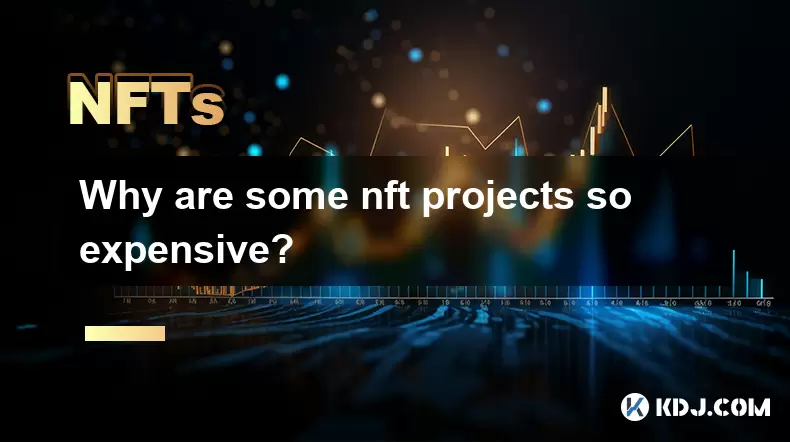
The Role of Scarcity in NFT Pricing
One of the primary reasons certain NFT projects command high prices is due to scarcity. In traditional economics, limited supply often drives up value, and this principle applies directly to digital assets. Many NFT collections are released with a capped number of tokens, creating artificial scarcity that fuels demand. For example, projects like Bored Ape Yacht Club (BAYC) have a fixed supply of 10,000 unique apes, each with varying traits that further differentiate their rarity.
When an NFT collection has rare attributes or only a few editions available, collectors perceive them as more valuable. This perception is reinforced by marketplaces such as OpenSea or LooksRare, where buyers can track ownership and rarity scores. As a result, rare NFTs within a collection often sell for significantly higher prices than common ones. Some individuals even specialize in “sniping” newly minted NFTs with potentially rare features before others notice, aiming to resell them at a premium.
Additionally, original creators sometimes destroy or remove certain NFTs from circulation, further reducing supply. This deliberate act, known as burning, enhances the exclusivity of remaining tokens and can lead to sudden price surges. Collectors who understand these dynamics closely monitor burn events and rarity rankings to make informed investment decisions.
Celebrity Endorsements and Influencer Marketing
Another significant factor contributing to the high valuation of some NFT projects is celebrity involvement. When well-known figures in entertainment, sports, or business endorse or create their own NFTs, it attracts widespread attention and drives demand. Celebrities bring their fan base into the NFT space, increasing visibility and legitimacy for specific projects.
For instance, when Snoop Dogg launched his own NFT collection or when Tom Brady partnered with Autograph, fans rushed to purchase digital memorabilia linked to their idols. These endorsements not only generate immediate sales but also influence long-term value perception. Collectors believe that celebrity-backed NFTs will appreciate over time, especially if the figure remains relevant or continues to engage with the project.
Influencers on platforms like Twitter, Instagram, and TikTok also play a role in promoting certain NFTs. Their recommendations can cause short-term spikes in trading volume and floor prices. Some influencers collaborate directly with NFT creators to release exclusive drops, which are often sold out within minutes. The social proof generated by such endorsements creates a bandwagon effect, encouraging new buyers to jump in without thoroughly researching the project’s fundamentals.
Utility and Functional Value Beyond Ownership
Beyond artistic appeal and celebrity association, many expensive NFT projects offer tangible utility that increases their worth. Unlike traditional collectibles, NFTs can provide access to exclusive experiences, services, or real-world benefits, making them more than just digital bragging rights.
Some NFTs grant holders membership privileges, such as entry to private Discord communities, early access to new releases, or invitations to virtual and physical events. Projects like BAYC give owners the right to commercialize their ape image, allowing them to create merchandise or content based on their NFT. This level of utility transforms NFTs from static assets into tools for personal branding and income generation.
Other NFTs integrate with decentralized applications (dApps) or metaverse environments, offering functional roles within gaming or virtual worlds. For example, owning a specific NFT might allow users to control a plot of land in a virtual game or unlock special abilities in a blockchain-based game. These interactive elements increase engagement and justify higher price tags compared to purely aesthetic NFTs.
Furthermore, some NFTs serve as governance tokens, giving holders voting power over future project developments. This democratic aspect appeals to investors who want a say in how a platform evolves, adding another layer of value beyond simple ownership.
Brand Collaborations and Institutional Backing
Collaborations between established brands and NFT creators have significantly boosted the perceived value of certain digital assets. Companies like Gucci, Nike, Adidas, and McDonald's have all experimented with NFTs, either by launching branded collections or partnering with existing NFT projects. These partnerships lend credibility and attract traditional consumers who may otherwise be hesitant to enter the crypto space.
For example, Nike’s acquisition of RTFKT and its subsequent NFT sneaker drops introduced a new audience to digital collectibles. Similarly, Adidas’ collaboration with BAYC and PUNKS Comic created a hybrid of fashion, art, and blockchain technology, appealing to both NFT enthusiasts and brand loyalists. These collaborations often come with physical merchandise or experiential rewards, enhancing the overall value proposition.
Institutional backing also plays a crucial role. When venture capital firms or major investors fund an NFT project, it signals confidence in its potential success. Projects backed by reputable entities tend to receive more media coverage and community trust, leading to increased demand and higher valuations. Investors look for signs of professional development, roadmap execution, and strategic partnerships before committing funds.
Moreover, licensing agreements with intellectual property holders can dramatically impact NFT pricing. If a project secures the rights to use popular characters, logos, or franchises, it gains legal protection and broader appeal, attracting both collectors and speculators.
Community Engagement and Social Proof
A strong, active community surrounding an NFT project is one of the most influential factors in determining its value. Projects with passionate followers often experience sustained interest and price appreciation. Community-driven initiatives such as art contests, charity events, and collaborative projects help maintain engagement and foster loyalty among holders.
Discord servers, Twitter spaces, and Telegram groups serve as hubs for communication, strategy sharing, and collective decision-making. When a community rallies behind a particular NFT project, it generates social proof that attracts newcomers. High levels of interaction and transparency between developers and holders contribute to a sense of belonging and shared purpose.
Projects like CryptoPunks and Azuki have cultivated dedicated followings that actively promote their collections through memes, interviews, and influencer takeovers. The emotional connection formed within these communities often leads to long-term holding behavior, reducing sell pressure and stabilizing prices.
Moreover, roadmaps outlining future developments—such as metaverse integrations, wearable partnerships, or expansion into new blockchains—keep the community excited and invested. Holders frequently speculate on upcoming updates, driving pre-emptive buying activity that inflates prices ahead of major announcements.
Frequently Asked Questions (FAQ)
What determines the initial price of an NFT project during mint?
The initial price of an NFT project during mint is usually set by the creators and depends on factors such as the project’s concept, team reputation, anticipated demand, and gas costs on the blockchain network. Some projects use Dutch auctions, while others opt for fixed pricing to encourage mass participation.
Can I verify the authenticity of an expensive NFT before purchasing?
Yes, you can verify an NFT’s authenticity by checking its blockchain transaction history using tools like Etherscan or Blockchair. Most NFT marketplaces also display verified creator badges and contract addresses to ensure legitimacy.
How do secondary market sales affect NFT prices?
Secondary market sales reflect real-time demand and investor sentiment. When a high-profile collector purchases an NFT or when multiple resales occur above the floor price, it signals strength in the project, often pushing prices upward.
Are there risks involved in investing in high-priced NFTs?
Absolutely. High-priced NFTs carry risks such as market volatility, rug pulls, and wash trading. It's essential to research the project team, check for audits, and assess community engagement before making large investments.
Disclaimer:info@kdj.com
The information provided is not trading advice. kdj.com does not assume any responsibility for any investments made based on the information provided in this article. Cryptocurrencies are highly volatile and it is highly recommended that you invest with caution after thorough research!
If you believe that the content used on this website infringes your copyright, please contact us immediately (info@kdj.com) and we will delete it promptly.
- XLM Price Prediction: Is Stellar Ready for a Breakout?
- 2025-07-08 19:10:13
- Bitcoin Reserves: The New Treasury Strategy for Corporations?
- 2025-07-08 18:30:12
- Bitcoin Buys Bonanza: DigitalX, Blockchain Group Double Down!
- 2025-07-08 18:30:12
- Pump.fun's PUMP Token and Gate.io: A $4 Billion Meme Coin Gamble?
- 2025-07-08 16:30:12
- DigitalX, BTC Holdings, Funding Secured: Aussie Crypto Firm Goes Big on Bitcoin
- 2025-07-08 17:10:12
- Acquire.Fi: Navigating the Web3 M&A Landscape as a Consultant
- 2025-07-08 16:30:12
Related knowledge
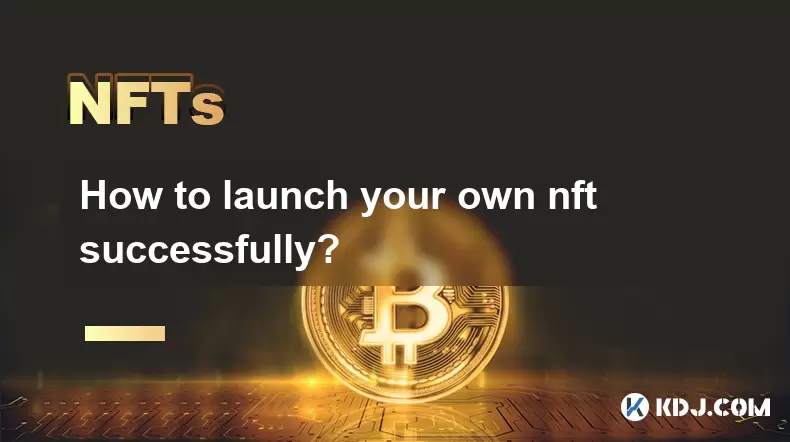
How to launch your own nft successfully?
Jul 07,2025 at 02:50am
Understanding the Basics of NFTsBefore diving into the process of launching your own NFT, it's crucial to understand what NFTs (Non-Fungible Tokens) are. NFTs are unique digital assets that represent ownership or proof of authenticity of a specific item or piece of content, such as art, music, videos, or even virtual real estate. Unlike cryptocurrencies...
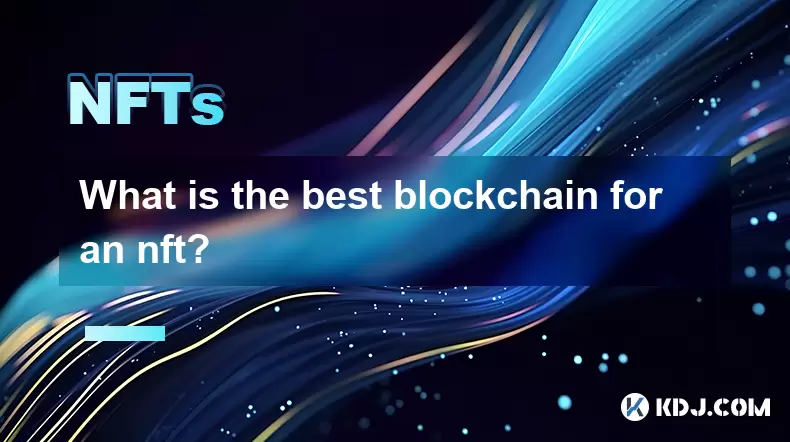
What is the best blockchain for an nft?
Jul 07,2025 at 12:22pm
Understanding the Criteria for Evaluating Blockchains for NFTsWhen determining the best blockchain for an NFT, several key factors come into play. These include transaction speed, cost of gas fees, scalability, security, environmental impact, and ecosystem maturity. Each blockchain offers a unique combination of these attributes, which directly affects ...
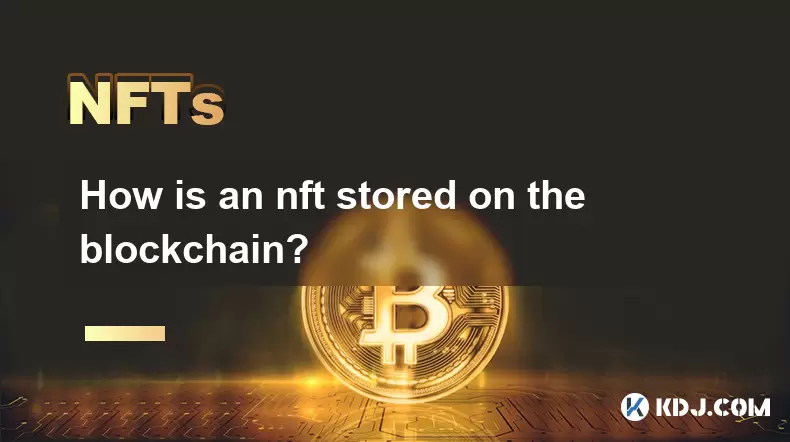
How is an nft stored on the blockchain?
Jul 01,2025 at 04:07am
How Is an NFT Stored on the Blockchain?Non-Fungible Tokens (NFTs) have revolutionized how digital assets are owned, verified, and transferred. Understanding how an NFT is stored on the blockchain provides clarity on its uniqueness, immutability, and traceability. Understanding the Basic Structure of an NFTAn NFT is a unique token that represents ownersh...
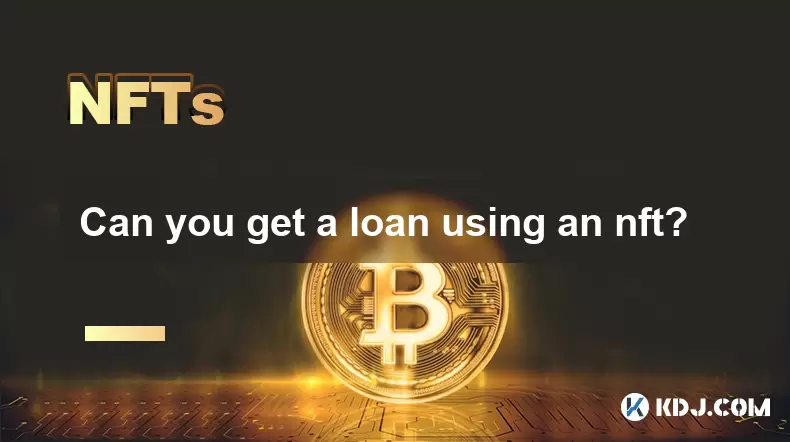
Can you get a loan using an nft?
Jul 05,2025 at 07:32pm
Understanding the Concept of NFT-Based LoansThe idea of using an NFT as collateral for a loan has gained traction in the decentralized finance (DeFi) space. NFTs, or non-fungible tokens, represent unique digital assets on the blockchain. While they are often associated with digital art, collectibles, and virtual real estate, their utility is expanding i...
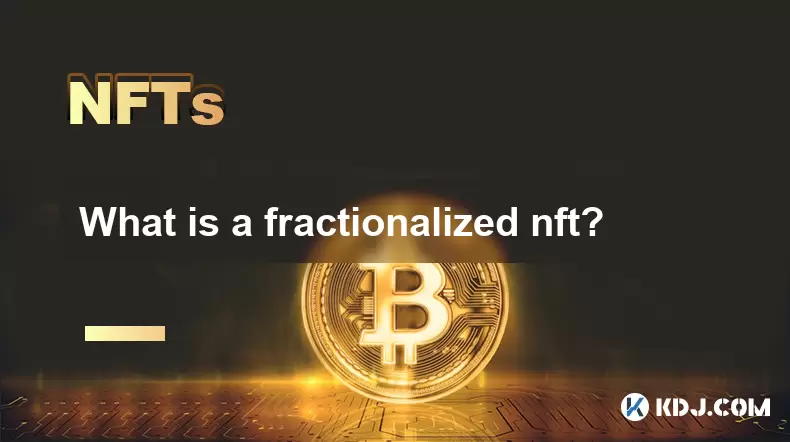
What is a fractionalized nft?
Jul 06,2025 at 10:50am
Understanding the Concept of Fractionalized NFTsA fractionalized NFT refers to a process where a single non-fungible token (NFT) is divided into multiple smaller, tradable parts. These parts represent fractional ownership of the original NFT. This innovation allows high-value NFTs to be accessible to a broader audience by enabling shared ownership. Inst...
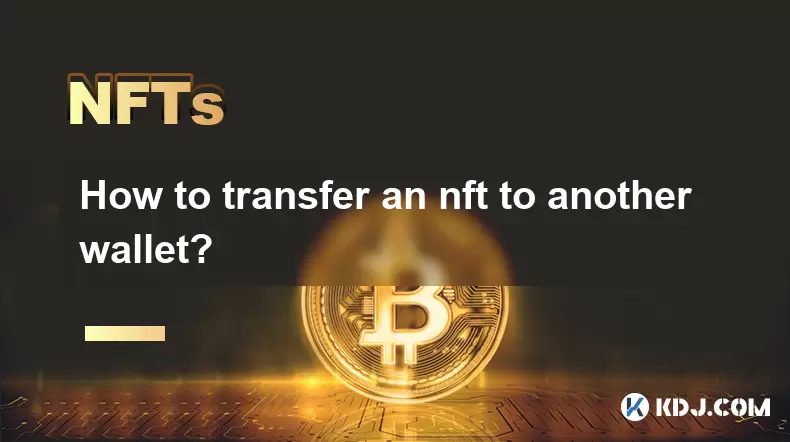
How to transfer an nft to another wallet?
Jul 01,2025 at 10:21am
Understanding the Basics of NFT TransfersTransferring an NFT (Non-Fungible Token) from one wallet to another is a common operation in the blockchain space. Before proceeding, it's crucial to understand what an NFT represents: a unique digital asset stored on a blockchain, typically Ethereum or other compatible chains like Binance Smart Chain or Solana. ...

How to launch your own nft successfully?
Jul 07,2025 at 02:50am
Understanding the Basics of NFTsBefore diving into the process of launching your own NFT, it's crucial to understand what NFTs (Non-Fungible Tokens) are. NFTs are unique digital assets that represent ownership or proof of authenticity of a specific item or piece of content, such as art, music, videos, or even virtual real estate. Unlike cryptocurrencies...

What is the best blockchain for an nft?
Jul 07,2025 at 12:22pm
Understanding the Criteria for Evaluating Blockchains for NFTsWhen determining the best blockchain for an NFT, several key factors come into play. These include transaction speed, cost of gas fees, scalability, security, environmental impact, and ecosystem maturity. Each blockchain offers a unique combination of these attributes, which directly affects ...

How is an nft stored on the blockchain?
Jul 01,2025 at 04:07am
How Is an NFT Stored on the Blockchain?Non-Fungible Tokens (NFTs) have revolutionized how digital assets are owned, verified, and transferred. Understanding how an NFT is stored on the blockchain provides clarity on its uniqueness, immutability, and traceability. Understanding the Basic Structure of an NFTAn NFT is a unique token that represents ownersh...

Can you get a loan using an nft?
Jul 05,2025 at 07:32pm
Understanding the Concept of NFT-Based LoansThe idea of using an NFT as collateral for a loan has gained traction in the decentralized finance (DeFi) space. NFTs, or non-fungible tokens, represent unique digital assets on the blockchain. While they are often associated with digital art, collectibles, and virtual real estate, their utility is expanding i...

What is a fractionalized nft?
Jul 06,2025 at 10:50am
Understanding the Concept of Fractionalized NFTsA fractionalized NFT refers to a process where a single non-fungible token (NFT) is divided into multiple smaller, tradable parts. These parts represent fractional ownership of the original NFT. This innovation allows high-value NFTs to be accessible to a broader audience by enabling shared ownership. Inst...

How to transfer an nft to another wallet?
Jul 01,2025 at 10:21am
Understanding the Basics of NFT TransfersTransferring an NFT (Non-Fungible Token) from one wallet to another is a common operation in the blockchain space. Before proceeding, it's crucial to understand what an NFT represents: a unique digital asset stored on a blockchain, typically Ethereum or other compatible chains like Binance Smart Chain or Solana. ...
See all articles

























































































